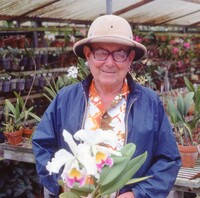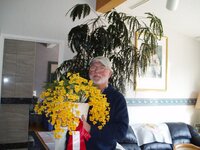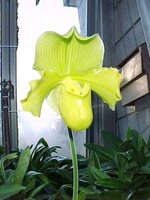Fun Facts and Stories About Dr. Ehor William Gauk
Dr. Ehor William Gauk has been recognized as an engaging teacher, pioneer in the field of Paediatric Neurology, facilitator of significant projects such as Medical Project Osvita, and a mentor and friend to many. He is a man with many passions in life and never-ending curiosity. His family describe him as someone who is always keeping busy with one project or another, and along the way, he has forged life-long connections with people in serendipitous circumstances.
Below are a few stories that highlight some of Dr. Gauk’s achievements, hobbies, and friendships that may be little known to some, and all too familiar to others.
Hypoxia
When you ask Dr. Gauk about one of his greatest achievements as a pediatric neurologist, he begins to tell an intriguing story about children who were taken to the hospital because they cried so hard that they lost consciousness. He describes the process in his autobiography as follows:
Every observant parent knows that when kids cry vigorously, they often become a little blue lipped. Crying is done in full expiration; there is no other way to cry. The odd kid pushes that air out for a little too long, turns blue and passes out, much to the horror of anyone nearby. The misnomer applied to this behavior has always been “breath holding” when in fact it is “breath blowing out” and the mystery behind all this was how the whole sequence would take less than a minute.
When Dr. Gauk was studying at the Hospital for Sick Children in Toronto, his chief and mentor Dr. John Stobo Pritchard asked him to study why children who suffered from this condition turned blue so quickly. To help him answer this question that had stumped so many residents, Dr. Gauk sought the assistance of a fellow resident—Dr. Langford Kidd (who would become chief of pediatric cardiology at John Hopkins University). Dr. Gauk and Dr. Kidd would study a local boy, with the permission of his mother, who frequently suffered from these spells, only to recover quickly after a short nap. They drew the conclusion that these episodes constituted a case of consumptive hypoxia— “they cry in full expiration. That leaves no oxygen in their lungs, and they turn blue, pass out, and arch their backs and have a few jerks.” The solution was to intervene quickly at the onset of a crying spell, forcing the child to take a deep breath.
Dr. Gauk and Dr. Kidd had their research on hypoxia published in The New England Journal of Medicine—albeit after navigating a system where the head of the department had to be listed as the principal author. They even managed to find funding to create a 15-minute short film on these “breath holding spells” animated by Crawley Films, famous for their work with Disney. Despite the scare both parents and physicians experienced witnessing children become unconscious and turn blue during a crying spell, Dr. Gauk suspects these episodes are harmless—though it is important to note that the long-term effects of these episodes have not been studied.
Orchids
Dr. Gauk became an orchid enthusiast after a chance encounter with an orchid grower in Hawaii. Dr. Gauk was walking back to his accommodations one evening when he got caught in a rainstorm and made the acquaintance of a gentleman working in his greenhouse. This man, Oscar Kirsch, invited Dr. Gauk into his greenhouse to wait out the storm and showed him the rich collection of orchids he was tending and propagating. Dr. Gauk became enchanted with the process of growing orchids and asked Oscar Kirsch to send $100 worth of cuttings to Edmonton. This chance encounter triggered Dr. Gauk’s life-long friendship with his orchid-growing mentor Oscar Kirsch, and a life-long passion for propagating orchids.
Upon the arrival of these cuttings from Mr. Kirsch, Dr. Gauk began propagating orchids in his backyard greenhouse in Edmonton. The greenhouse provided the perfect conditions for growing orchids as it contained a hot tub (or as Dr. Gauk called it his “bochka”) that mimicked the tropical conditions where orchids thrive. In the process, he became involved with the orchid growing community in Edmonton and internationally. In 1978, he even received a letter from Mr. Kirsch stating that he is working to register one of Dr. Gauk’s orchids as Sophrolaeliocettleya ALBERTA. The Orchid Society of Alberta has also named a trophy after Dr. Gauk—the Ehor Gauk Trophy for the best greenhouse grown Orchid plant.
Dr. Gauk’s family, friends, and colleagues all reflect fondly upon visits to the Gauk residence and time spent in the famous greenhouse. Dan Reinbold, former head of administration for Medical Project Osvita, recalls that there was one orchid that bloomed once a year, for merely a few hours, and smelled like chocolate. When Dr. Gauk and his wife Julie sold their home, they donated Dr. Gauk’s orchid plants to the Muttart Conservatory in Edmonton, Alberta. On a recent trip to the Muttart Conservatory, Dr. Gauk’s daughter Rachel met an employee who told her that Dr. Gauk’s orchid collection helped to propagate many orchids in the Muttart’s current collection and have done wonders for the preservation of certain rare orchid species.
Art Collecting
“The secret to art is that you gotta love it”
In 1968, Dr. Ehor William Gauk fell in love with the William Kurelek painting Home on the Range, 1967 for sale at the Jaycox Gallery—sparking a relationship both with collecting art and with the artist Kurelek himself. The painting depicts a vast prairie landscape in the dead of winter: the ground is covered in a blanket of white snow stretching far into the horizon. Strong prairie winds have blown the snow into a deep drift along a standing of trees, and here children can be found sledding and digging tunnels into its steep edge. The moon emerges from a darkening early evening sky—it is likely the middle of December.
This painting immediately filled Dr. Gauk with nostalgia for his childhood in rural Saskatchewan, and the painting made its way home with him. Several months later, Dr. Gauk was in Toronto where he decided to pay the artist, William Kurelek a visit. Dr. Gauk described how Kurelek took himself and his cousin into the basement of his home and pulled out two chairs. Along the perimeter of the room, paintings were stacked with their backs facing the room, and Kurelek began presenting them to Dr. Gauk one by one. Unfortunately, none of these paintings struck Dr. Gauk as much as Home on the Range; however, this encounter did allow the two men to form a lasting friendship. Kurelek even stayed with Dr. Gauk while his work was exhibited by the Art Gallery of Alberta at a future date.
All together, Dr. Gauk purchased six Kurelek paintings throughout his life which hung on the walls of his home and office for some time. He was moved by Kurelek’s declaration that he painted for the world to see--not simply for the pleasure of wealthy collectors—and donated several pieces to the University of Alberta Museums Art Collection. These paintings included Children Fetching Cows After School, 1970 and Escape to Egypt #2, 1976. As for Home on the Range, Dr. Gauk sold this piece to the art collector Ken Thompson, who would donate it along with roughly 2000 other artworks in his collection—the most significant private art collection in Canada --to the Art Gallery of Ontario where it remains today.





